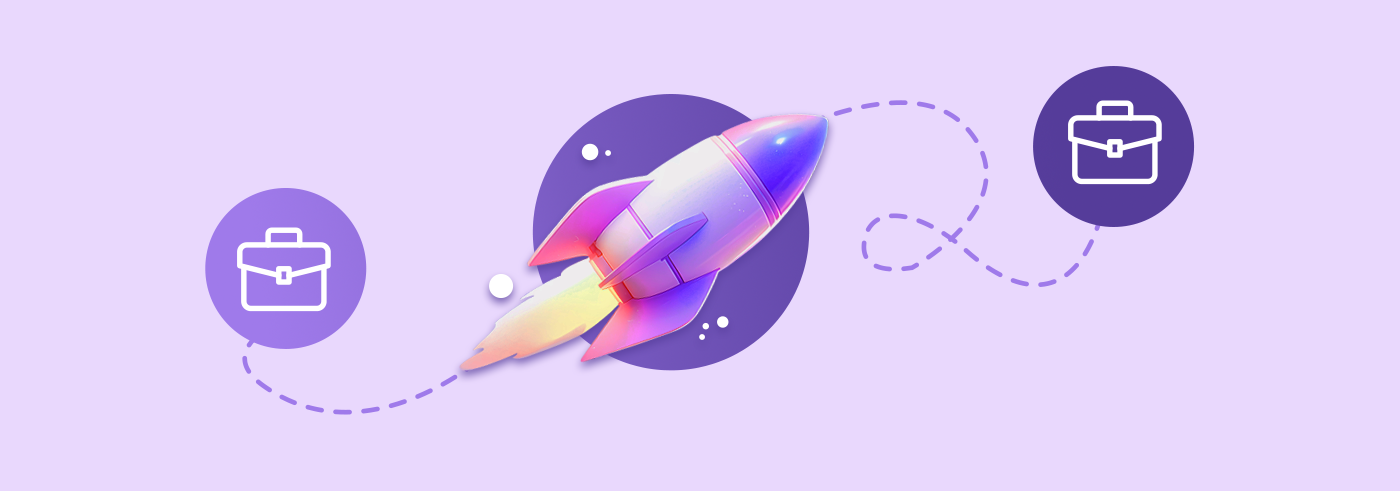B2B email marketing can be a tough nut to crack.
You want to deliver email campaigns that have your audience on the edge of their seat waiting for the next edition. But to do that you have to understand them, and what they want to hear from you. There are many different strategies and tips that you could employ in your B2B email marketing campaigns.
Of course, your ultimate goal is to drive sales and conversions, but B2B sales don't come easily. Your prospects need to be nurtured and provided with materials that endear them to your brain and position you as an expert in your field. When it comes to reaching B2B audiences, there are no platforms that are as effective as email. There are 3.9 billion daily email users and B2B marketers credit email newsletters as their most effective form of content marketing.
I interviewed 10 CEOs with experience in B2B email marketing. I asked them for the most important tips that they could share on the subject. Some of the answers might surprise you!
Table of Contents
- B2B email campaign ideas
- A good lead magnet can be make-or-break
- Narrowly focus on a topic
- Design sequences that build toward something
- In B2B, designs matter little compared to what you say
- Your subject line is the most important part of your campaign
- Consistency matters
- The more you segment, the better the results
- Curate content to fill In the gaps
- Encourage conversations
- Share your successes
- B2B email marketing tips - summary
B2B email campaign ideas
A good lead magnet can be make-or-break
David McHugh, CMO of Crediful talked about the importance of genuinely actionable lead magnets in B2B email marketing.
“Your lead magnet is your reason to subscribe. “Weekly Tips” isn’t going to get the job done anymore unless your tips are absolutely stellar and original. When you create a lead magnet, focus on making something actionable. If you give your audience a reason to download it and hold onto it for the long-term, that alone will help you to stay top-of-mind. Plus, a great lead magnet improves subscription rates and keeps a consistent flow of engaged subscribers coming into your newsletter.”
A great lead magnet can be an ongoing driver of new subscribers. Ideally, you want to deliver information that your audience will voraciously consume. Often, this means giving away the goods for free. Maybe not everything, but at least an aspect of what someone would need to know about your product or service.
But brainstorming an angle for a good lead magnet can be difficult. As with all marketing, it's probably best to turn to your audience and customers for ideas. What questions are you consistently asked about? What subjects do your customers care most about? Especially when they first begin engaging with your company, use these responses to design a subject for your lead magnet.
Offering a boring lead magnet will get you nowhere. You want to make sure that you offer something that your audience will be excited to receive and will set the stage for future communication.
Narrowly focus on a topic
Reuben Yonatan, Founder & CEO of GetVoIP believes that to stand out you have to narrowly focus on your newsletter.
“When you are just getting started, you are competing for people’s attention. Everyone has a limited amount of attention that they can spend consuming content each week. You have to break into that space. But, you don’t want to compete against every company on Earth that is creating content about subjects related to your solution. Instead, focus on honing in on a very specific aspect of what you do. Whether that is for a certain industry or use case.”
Defining the subjects that you cover in your newsletter too broadly is almost certain to result in a following that is not engaged.
Let's say your company offered content marketing software. There are hundreds, if not thousands of companies writing about content marketing in the digital marketing industry. Standing out there is going to be tough. You can't realistically expect to out-do everyone in the space that publishes information about content marketing and earn readership without having a unique angle.
However, if you focus on a very specific slice of that industry, you can create compelling content that stands out from the crowd and earns you an engaged following.
When it comes to content marketing, you could narrow down the niche that your newsletter covers. For instance, you could offer tips for helping consultants improve their content marketing through thought leadership content. This gives you a very narrow slice of the total industry but helps you to engage with a very specific type of customer. Choose a narrow lane that is focused on a customer persona that has historically performed well for your company.

Design sequences that build toward something
Max Harland, CEO of Dentaly believes that your initial emails should build toward something more substantial.
“Don’t give up all the value in the first few emails that you send. Drip the value out over the course of five, ten, or even fifty emails if you have enough value to provide. Your B2B email sequences should build toward something more substantial than what amounts to ‘touching base’ with your email subscribers.”
There is nothing worse than signing up for a B2B email newsletter, receiving one or two very interesting emails, and then feeling like you've been thrown on the back burner with boilerplate, boring newsletters that eventually cause you to unsubscribe. We've all been there.
You don't want your new subscribers to feel like they got their value in the first email or two, and then that value fell off a cliff.
The first emails that you send should be introductory. They should be laying the groundwork for what is about to come, teasing bits and pieces of value that will keep your audience coming back for more. Your email sequences should build on the groundwork of those initial emails toward a bigger, broader idea.
Of course, any B2B company has an end goal of converting more buyers. But those buyers will always be your most engaged subscribers. Very few of your subscribers will be ready to buy into your solution after a single email or two. Having a long-term goal and numerous sequences that build onto each other can help your subscribers to see the bigger picture of what your company has to offer.
In B2B, designs matter little compared to what you say
Here's Sturgeon Christie, CEO of Second Skin Audio, believes that B2B email marketing should focus less on design and more on copy.
“In eCommerce and B2C email marketing, the design is so huge. But in B2B, there is a heavier focus on content. Your copy matters that much more as a result and there is more to consider than the microcopy that is present in B2C email campaigns. Spending a ton of time, money, and effort on email designs really isn’t a good use of your time in B2B email marketing. Instead, focus on sharpening your copy.”
In eCommerce and B2C email marketing, design plays a critical role in the effectiveness of your campaigns.
That isn't to say that designs don't matter at all in B2B. A well-designed email newsletter template can signal professionalism, but ultimately the design matters less than what you are saying to your customers.
The nature of B2B email marketing is more informational and educational than most B2C campaigns. When you are offering high-ticket products and solutions, your focus needs to be more on the content that you deliver, and how you deliver it than on ensuring that your emails simply look pretty.
Now, that isn't to say that you shouldn't invest in a professionally designed template for your B2B email newsletter. Instead, you should look to keep that template somewhat basic, so that your emails are easily readable and skimmable. Most of your audience is going to be reading your emails on their mobile device. Design your emails with that fact in mind. The mobile device opens an account for 46% of all email opens.
Your subject line is the most important part of your campaign
Ruggero Loda, CEO of Running Shoes Guru knows that your subject line ultimately dictates the success of any email campaign.
“Your email subject line is the most important aspect of your whole campaign. If your subject line isn’t intriguing, if it doesn’t evoke emotion in some way, you are not going to convince your audience to open it. Companies should be spending a lot more time brainstorming subject lines than they do today.”
Sure, the content that you deliver to your subscribers matters. It's ultimately the content that shapes their view of your company and endears them to your brand. But if they never open their emails, they're never going to get to read that content. Your subject line determines whether or not they open your email and read the content there.
Over time, you should look to split test different email subject styles, so that you have a good idea of what your audience responds to. After sending enough emails, the preferences of your audience will become more clear over time. Keep a running list of the subject lines of the most opened emails that you have sent. Analyze them. Understand, psychologically, what drove your audience to open each particular email. Then, try to emulate that in future campaigns.

Consistency matters
Ian Kelly, COO of NuLeaf Naturals, believes that consistency is perhaps the most important ingredient for success in email marketing.
“You have to stay top of mind. To do that, you have to be in continuous communication with your audience. Of course, that doesn’t mean that you should be sending something every day. That would probably annoy them. But you should be sharing regularly enough, with enough value-added, that your audience is excited to hear from you again.”
Have you ever been subscribed to a B2B email newsletter that you read consistently, then they just seem to drop off the face of the Earth? Maybe then, a year later, you receive an email from them again and they are just trying to pick up where they left off?
This is unfortunately very common in B2B companies. They put a lot of effort into it over a short period of time. Over time, they begin to prioritize other things. Sometime down the line, they come back hoping for better results this time around. However, now most of their list probably doesn't remember who they are, why they subscribed in the first place, and are likely to quickly unsubscribe from the newsletter.
Consistency matters a lot. Of course, you shouldn’t email your list if you don't have anything productive to say. But you want to email enough to ensure that your subscribers remember who you are, know that you provide consistent value through your emails, and keep you top-of-mind — even when they may not have heard from you in some time.
The more you segment, the better the results
Ty Stewart, CEO at Simple Life Insure, says that segmentation is the key to an effective email marketing campaign.
“For email marketing to be effective, you have to speak directly to your audience. That means that it needs to sound as if every email was written specifically for them. When you are emailing your entire list at the same time and not building separate campaigns for different customer personas, that is impossible to do. Break down your list into specific segments and create sequences that are for each major segment in your list.”
Do you know what the most important driver tips for B2B email marketing engagement are? It's personalization. Segmented, targeted, and personalized emails generate 58% of all revenue generated through email campaigns. It makes sense, right? Wouldn't you be more likely to engage with emails that feel like they were specifically written for you?
Consider cold emails. Anyone in a decision-maker position is used to receiving cold emails in their inbox. It just comes with the territory. But they don't respond to cold emails that have clearly been automated and sent to a massive number of people. They only respond to emails that have been personalized specifically for them, where the sender makes it clear that they have researched their business.
The same is true for warm emails to subscribers as well. Your results will always improve when the content is specifically relevant to each person. A CEO should be receiving different emails than a CMO. Their concerns and needs are completely different.
So don't be afraid to segment your list or even send completely different email sequences to specific segments. While you may not email them as much as if you were to send every email to your entire list, you can bet that the emails that you do send will build better relationships with prospects, and encourage more engagement from your subscribers.
Curate content to fill In the gaps
Brian Patrick, Home Expert & CEO of Pest Strategies, shared his thoughts on staying-top-of-mind with curated content.
“Consistently creating high-value content for your audience is difficult, especially if you want to send weekly emails. Sometimes, you’ll have a hard time getting something together in time to go out. A great way to give yourself some breathing room is to occasionally curate relevant industry content from others that your audience will find useful. You can also use this approach to establish other beneficial relationships within your industry.”
Earlier we touched on tips relating to the importance of staying consistent with your B2B email marketing. Of course, staying consistent can be pretty difficult. Once you run through your sequences, you may not have something valuable enough to warrant a new campaign each and every week.
But that doesn't mean that there isn't value out there in your industry. There are always articles, videos, and social media updates that your audience would find interesting. Other brands or influencers might even share some. When you don't have anything important to say, or are working on your next email but want to stay relevant in the meantime, delivering curated content to your audience can be a great way to deliver value and stay top-of-mind.
Finding interesting content from around the web and sharing it with your audience also allows you to build relationships with those brands as well. Everyone appreciates when others share their content.

Encourage conversations
Vinay Amin, CEO of Eu Natural thinks many B2B companies make a mistake by not encouraging conversation within their email marketing.
“One of the biggest mistakes that I see people making in B2B email marketing is treating it like a one-way conversation — their brand to their audience. If you want to build personal relationships with prospects it has to be a two-way street. Encourage your readers to respond to your emails. Feature those responses in future newsletters, and engage in genuine back-and-forth conversation with them. You might be surprised how impactful it can be!”
One of the biggest mistakes that B2B companies often make in their email marketing is not making themselves available through the channel. Sure, they send out their newsletter through email, but if a prospect wants to email them back and comment on the latest email that they received, there's no one on the other end to receive those emails and respond. When your prospects respond, those emails sit out in the void, with no one tasked with building on those relationships.
Instead, try and encourage your subscribers to respond to the emails that you send. Ask for their opinion. Ask what they would like to learn about. And when they do respond, make sure that someone is on the other end to answer back. You can start amazing conversations with your ideal prospects simply by encouraging them to ask questions or share opinions related to the emails that you send.
Share your successes
Tony Shannon, CEO of RiseFuel, tip mentiones sharing successes and case studies as an easy way to generate ROI from B2B email marketing.
“B2B email marketing is too often top-of-the-funnel focused. I’ve found it to be an excellent place for sharing case studies, delivering customer success stories, and generally getting some social proof in front of your audience.”
Few pieces of B2B content that are beneficial than an impressive case study. Being able to point to the successes that your solutions have delivered to your customers, and get them in front of prospects that are going through the nurturing phase, can do a lot to build trust in your brand that may pay off down the line.
However, far too often, B2B companies use their newsletter to deliver top of the funnel content and more superficial educational information exclusively. Your newsletter is ripe for sharing case studies and customer success stories. When combined with deep segmentation, you can deliver case studies that are aligned with specific audiences by industry or customer persona. These case studies will go a long way toward building trust. They will position your company as a trusted provider in the space.
B2B email marketing tips - summary
Use these B2B email marketing tips to inform your approach to running your newsletter. The insights provided by these executives can help you to streamline your operations, be more effective in the way that you communicate and ultimately nurture more leads into buyers.







